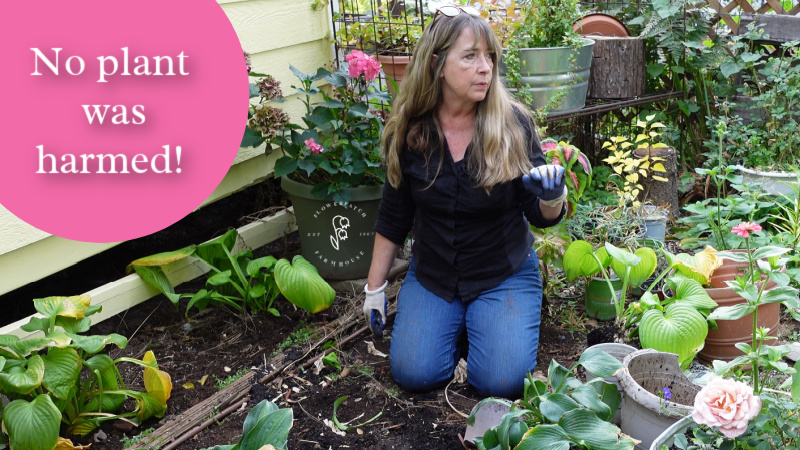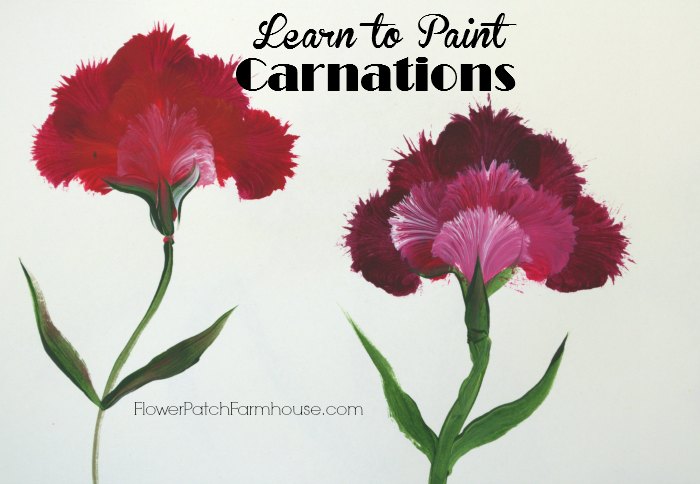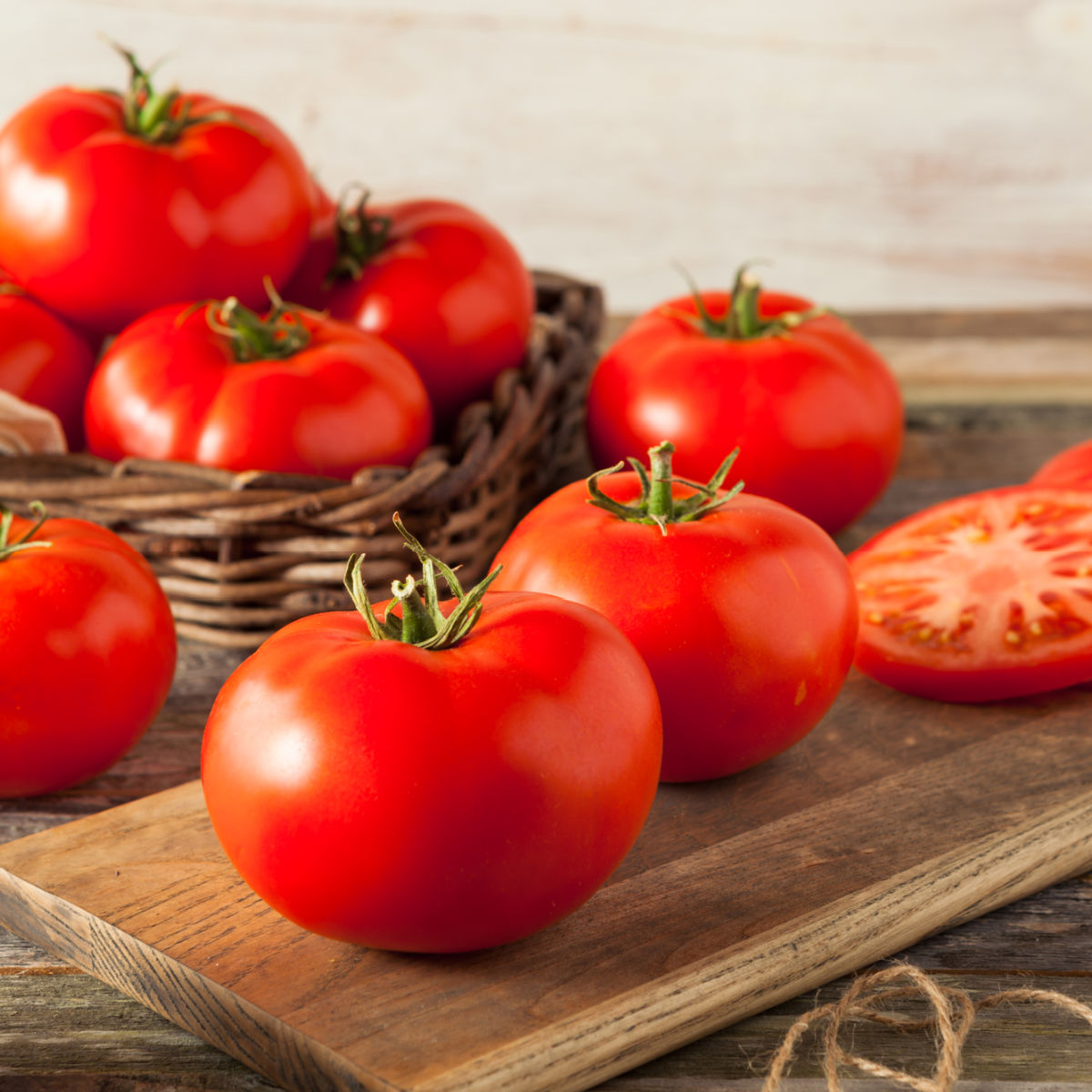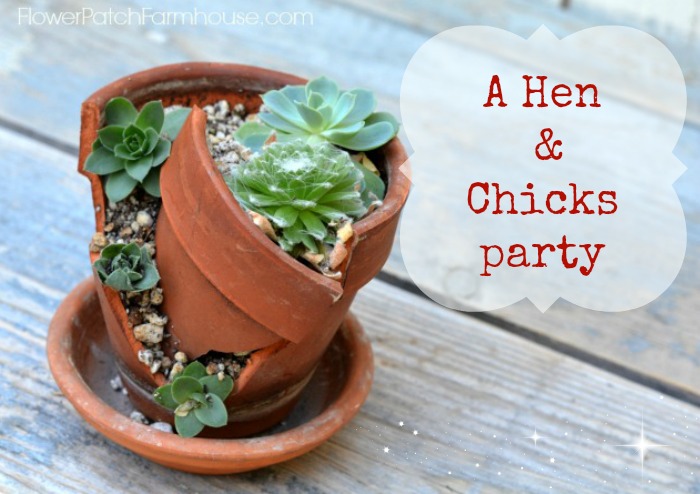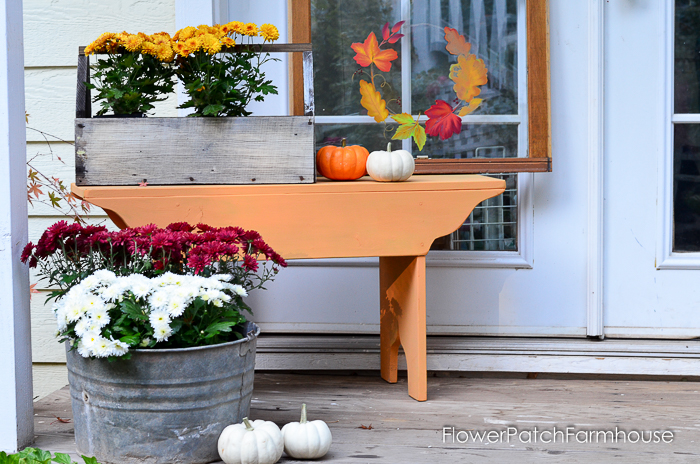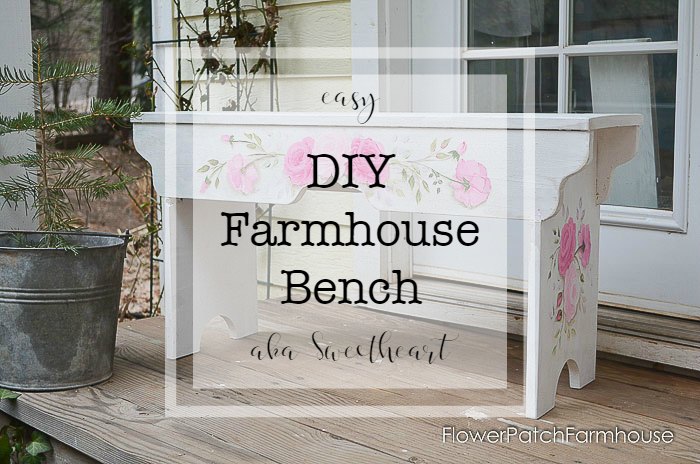Ultimate Guide to Planting Hosta: Tips for a Lush Garden
In this guide, we’ll walk you through the essential steps for planting hosta, ensuring your garden boasts vibrant and healthy specimens.
Hostas also known as plantain lilies, are renowned for their lush foliage and easy maintenance. With their versatility and adaptability, they can thrive in various climates and soil conditions.
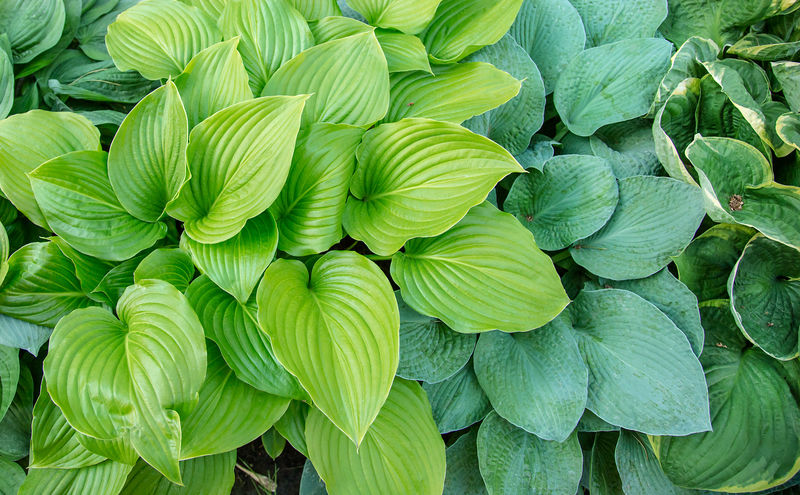
Most people use them in shade gardens and though many are shade lovers there are some new hostas that do well in other areas of the garden. While hosta flowers are pretty these plants are typically added to garden beds for their beautiful foliage.
Some hostas have fragrant flowers, and you may wish to plant scented types near a patio or path to enjoy them fully.
You can find them at a garden center near you or order bare root plants online. Hosta foliage comes in a wide range of different colors and leaf shape.
Takeaways from this:
- Planting Hosta Basics
- Hosta Care
- Hostas are low-maintenance perennials that thrive in partial to full shade.
- Sandy loam soil rich in organic matter is ideal for planting hostas.
- Most hostas should be planted in a location that offers some shade to prevent leaf scorching.
- Hostas are drought-tolerant once established, but they need a good soaking immediately after planting and typically for the first year in the soil to help them get started.
- Hostas can be planted anytime from spring to fall, as long as the soil is not frozen.
Planting Hosta Basics
Hosta plants (Hosta spp.) are known for being easy to plant and easy to care for once they’ve become established in the soil. That said, there are a few things you can do to ensure these hardy plants are off to a good start.
It is recommended that you plant hosta in Spring but you can also do this in early Fall once the temperatures begin to cool down.
As a general rule, planting during the hot summer months can make it difficult for the hosta aka plantain lily to establish but it can be done if you keep the individual plants well watered even in shady areas. This will help the root systems get going.
I love to use this growth stimulator to give them the extra help they need. Or you can keep them as a container plant until the summer heat has abated closer to late summer and well into fall.
Much of this depends on your local climate conditions.
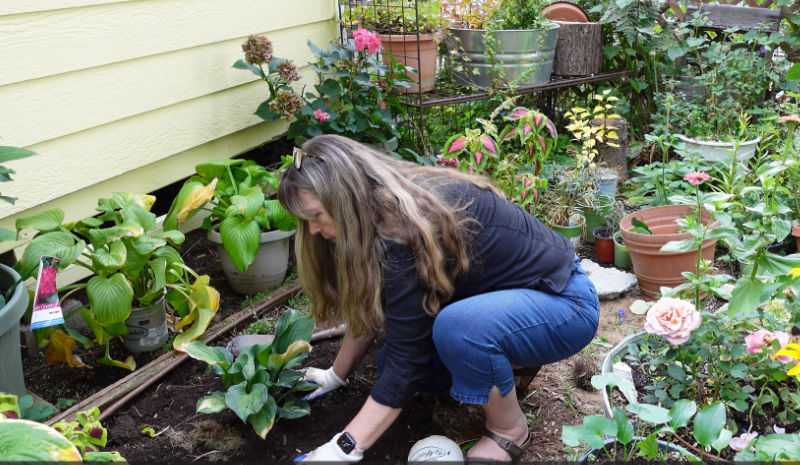
Choosing a Planting Location
Choose a planting location that offers partial shade, as too much sun can cause the leaves to scorch. Hostas also prefer well-drained soil, so if your planting area tends to be on the wet side, consider planting on a raised bed or mound. Try not to plant hostas in areas where water pools after rainfall.
Some hosta varieties can take more sun than others but usually even those would prefer morning sun. Though I have seen some claim there are tougher ones that can take full sun.
I will try some of these and let you know what I think.
The one I have called Stained Glass is one listed as faring well in full sun so I am going to plant a division there to test it!
Preparing the Hosta Planting Hole
To prepare the planting hole, dig it twice as wide as the root ball (or the roots themselves if planting a bare root hosta) but of the same depth.
If your soil is very heavy, you may want to make the planting hole a bit deeper and mix in some compost to help with drainage.
My soil used to be all heavy clay but is not looser and well-draining because of the constant amending with compost and well-rotted manure.
Planting Your Hostas
Loosen any circling roots on the root ball before planting. This will encourage the roots to grow outward into the surrounding soil instead of continuing to circle around in the planting hole.
In my video, I show this step and how rough you can actually be without harming the plant.
Place the root ball in the planting hole and backfill it with the soil that came out of the hole. Gently firm the soil around the plant to secure it in place. Water thoroughly after planting.
Caring for Your Hosta
Watering Your Hosta
Hostas are drought-tolerant once they’re established, but they need a good soaking immediately after planting and typically for the first year in the soil to help them get started.
After that, they should be watered deeply once a week during dry spells. Many recommend an inch of water so if you don’t get summer rains keep this in mind.
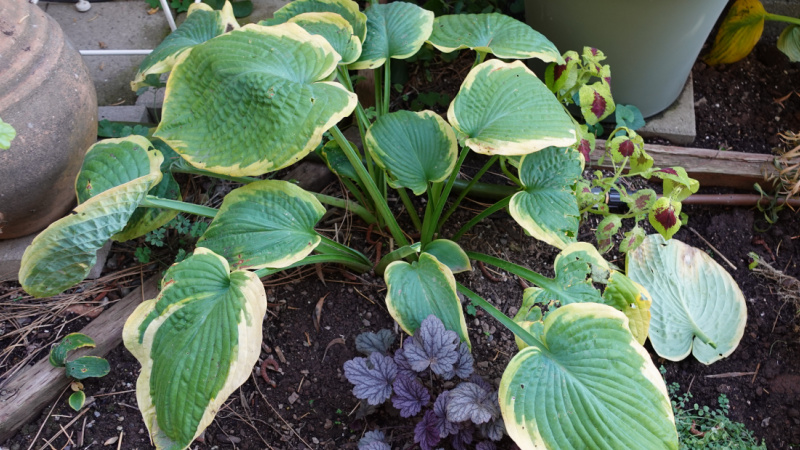
Fertilizing Your Hosta
Hostas don’t require much fertilizer, but they do benefit from an application of slow-release fertilizer in early spring into early summer.
I use compost or well-rotted manure around your hostas as my slow-release fertilizer.
Dividing Your Hosta
You can divide your hostas every few years if they become too large for their space or if you want to propagate new plants.
The best time to divide hostas is in early spring as or before new growth appears. You can slice off a division of the parent plant while still in the ground or you can dig up the entire plant and divide off sections.
In the video, I share doing it in Fall which is just fine too.
Dealing with Pests and Diseases
Hostas are generally pest-free, but they can be susceptible to slugs and snails. You can control these pests by using slug bait or by placing copper strips around your hostas. If you notice holes in your hosta leaves, it may be due to slugs or snails.
Some hostas are more slug resistant and are noted as such in the descriptions on sites that sell them.
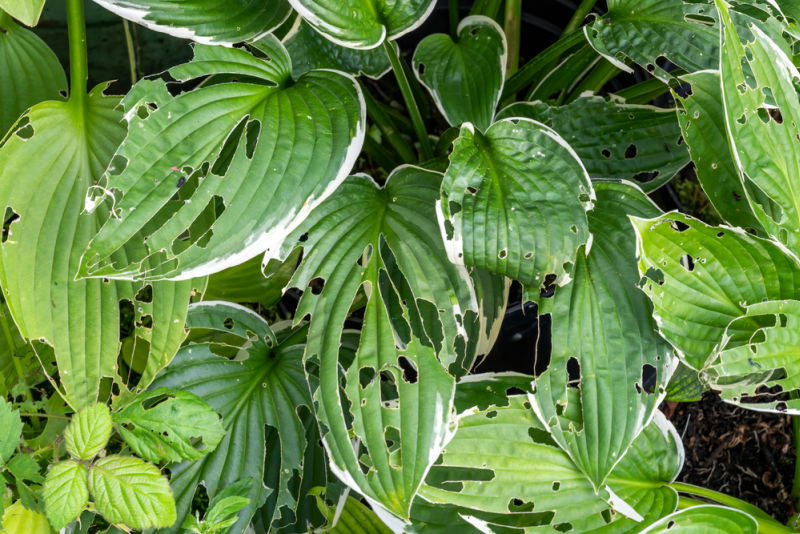
Conclusion
Planting and caring for hostas is easy once you know what you’re doing. By following these simple steps, you can enjoy beautiful hostas in your garden year after year.
I wish you happy hosta planting!
Here are some popular hosta varieties known for their distinctive foliage and adaptability:
- ‘Sum and Substance’ – This variety boasts large, chartreuse leaves and is known for its impressive size.
- ‘Frances Williams’ – Recognized for its bold blue-green leaves with wide, golden-yellow margins, this hosta variety is a classic choice.
- ‘Guacamole’ – With vibrant, glossy, green leaves and fragrant blooms, this hosta variety is a favorite among gardeners. (I have this one!)
- ‘June’ – This variety features blue-green leaves with striking gold centers, making it a standout in any garden.
- ‘Sun Power’ – Known for its bright gold leaves that can tolerate more sun than other hostas, this variety adds a burst of color to shaded areas.
- ‘Patriot’ – A popular hosta with deep green leaves and crisp white margins, providing a striking contrast. (I have this one too)
- ‘Halcyon’ – This variety is cherished for its intense blue-gray leaves, creating a soothing presence in the garden.
- ‘Empress Wu’ – One of the largest hosta varieties, ‘Empress Wu’ showcases enormous, deeply veined green leaves, making a bold statement in the garden.
- ‘Stained Glass’ – This hosta variety is known for its bright gold leaves with dark green margins, creating a stunning visual effect. (I just put this one in my hosta garden)
- ‘Elegans’ – With large, blue-gray leaves, this hosta variety offers a classic and elegant presence in the garden.
Remember, the local availability of hosta varieties may vary by region. When selecting hostas for your garden, consider factors like light conditions, soil type, and climate to ensure the best match for your specific gardening needs.
